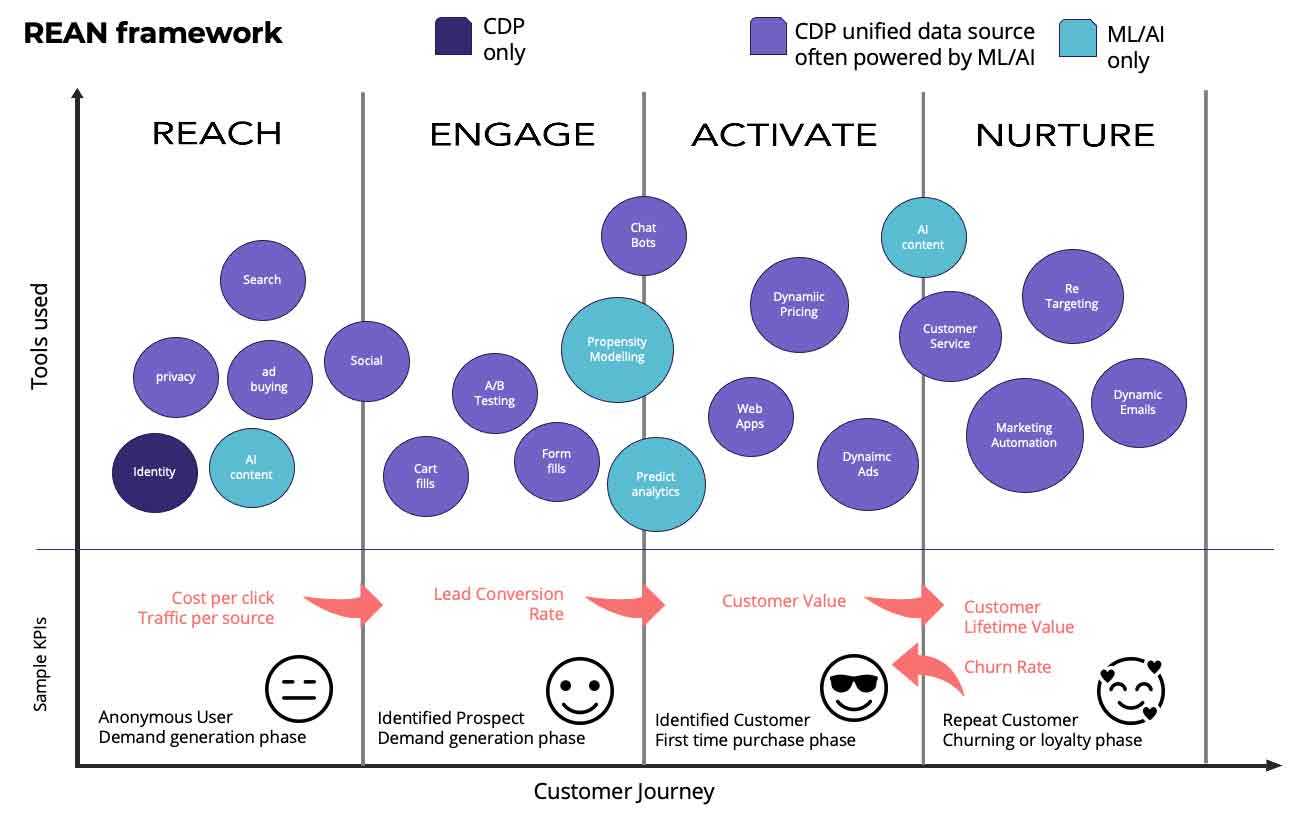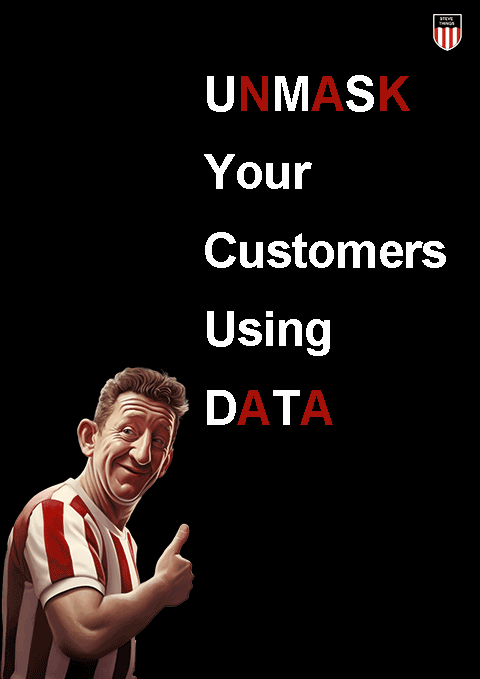Omnichannel marketing (I hate the term by the way) is quickly becoming more important for businesses no matter whether they like the buzzword or not. Another buzzword is growth hacking. Both are similar in that the tactics that practitioners use meaning that they both rely on many ways (or channels) to attract, engage and retain prospects and customers.
There isn't one channel to rule them all
It’s no longer enough to rely on one platform or channel to reach customers; instead, businesses need to establish a presence across multiple channels and platforms in order to maximize engagement and reach.
But how do you ensure success with this approach? How do you understand what works? How do you track customers and prospects effectively? How do you get more sales for less marketing spend?
Yep, you may have guessed where I was going with this. A Customer Data Platform (CDP) can be an effective tool to help you achieve omnichannel marketing success, or growth hack or do what I used to call conversion rate optimisation (long before anyone had heard of omnichannels or growth hacks).
By understanding how a CDP works and its potential benefits for omnichannel marketing success, you’ll be able to decide if leveraging one is right for your business. Let’s get started by exploring what makes CDPs so powerful when it comes to omnichannel marketing!
Overview Of Customer Data Platforms
Customer Data platforms provide the necessary insights to help marketers drive customer engagement and loyalty. As such, leveraging a customer data platform (CDP) is paramount to taking full advantage of the opportunities that come with modern marketing strategies.
A CDP provides access to both structured and unstructured data from multiple sources. This data can then be used to create custom audiences, analyse behaviour, and inform targeted campaigns. By connecting all available data points into one central repository, marketers are able to develop comprehensive profiles of each individual customer and provide relevant content tailored to their needs.
When used correctly, a CDP can support effective omnichannel marketing by enabling campaigns across various channels including email, web, social media, display ads, and in offline environments where mobile phones are used in apps or with digital cashiers. So with a CDP in place, marketers can have a greater understanding of their customers’ preferences and tailor their messages accordingly for the maximum benefit.
Benefits Of A Customer Data Platform
A customer data platform offers many benefits that can help you achieve omnichannel success. It provides a single source of truth, allowing you to have a unified view of your customers. With access to more detailed customer profiles, you can create more effective and personalised campaigns. Additionally, CDPs enable real-time segmentation so that your campaigns are tailored to specific customer segments and more relevant content is delivered at the right time.
Perhaps one of the most advantageous features of CDPs is their ability to integrate with other marketing solutions such as advertising networks, web analytics platforms, and CRM systems. This allows for a seamless flow of data between systems so that all customer interactions are tracked in one place.
Integrating With Existing Systems
In order to take full advantage of a customer data platform, marketers must ensure that it is integrated with other systems across their organisation. This allows them to obtain a comprehensive view of their customers and employ omnichannel strategies. By connecting CDPs with existing systems, marketers can collect data from multiple sources into one central repository and access more complete customer profiles.
-
Integrating a CDP with an advertising network (IE Facebook or Google) enables marketers to increase the effectiveness of campaigns by targeting the right audience with the right message at the right time.
-
Integrating with web analytics solutions helps marketers track website behaviour and optimise their content for maximum engagement when the visitor is an anonymous prospect.
-
Connecting a CRM system enables marketers to personalise interactions across channels for each individual customer.
These integrations create an end-to-end view of the customer journey from acquisition to loyalty. With this insight, they can deliver tailored experiences that are relevant to each customer segment and build strong relationships that drive long-term loyalty.

The REAN model
REAN is a model I've been using since 2007 to map omnichannel campaigns. The idea is armed with a comprehensive view of your customers, you can create an omnichannel strategy to engage them across all available channels. So reach includes things like ad networks and search engines, engage could be on social or with chat bots, activate are the things that you do around the purchase phase such as dynamic pricing and then nurture is when you reach out to loyal customers (or define when they're no longer a customer).
When building an omnichannel strategy, marketers should start by defining the customer journey and identifying which channels they should use to reach their target audience. They should then create content for each channel that is tailored to the specific needs of each segment. This content should be optimised for maximum engagement and feature relevant calls-to-action (CTAs) that drive users towards conversion.
You should then map out the various tools you have to use. See how the diagram shows all the purple colors? That's where the CDP comes in across each stage of the lifecycle.
Measuring Results And Optimizing Performance
With an omnichannel strategy in place, it's now time to measure its effectiveness and optimise performance. To ensure success, marketers should track the performance of their campaigns across channels and use this data to inform their decisions.
As shown in the diagram there are a few key metrics you should consider when evaluating their results:
-
Conversion rate: This metric measures how many people have taken a desired action from each channel, such as making a purchase or signing up for a newsletter.
-
Cost per conversion: This metric indicates how much money is being spent for each successful transaction.
-
Click-through rate (CTR): This metric shows the percentage of users who clicked on a CTA after viewing an ad or piece of content (in the reach, engage and activate phases).
-
Customer lifetime value: When you define that your customer is no longer a customer you can work out your customer lifetime value (CLTV) and the churn rate. The churn measures if your customers are abandoning you and you need to act, the CLTV measures how valuable your customer is long term.
By tracking these metrics over time, you can gain valuable insights into how your campaigns are performing and make adjustments as needed in order to maximise your ROI.
Growth hackers will tell you, you should test different variations of content and CTAs in order to find which combinations result in the best outcomes. They're not wrong.
The benefits outweigh the cost
Taking advantage of a customer data platform is an important step in creating an omnichannel marketing strategy. This type of platform offers numerous benefits, including the ability to integrate with existing systems and measure results. With the right setup and execution, businesses can use this powerful tool to create seamless campaigns that span multiple channels and deliver successful results.
By taking advantage of a customer data platform, companies can quickly gain insights into their customers' behavior, allowing them to tailor their messages to each individual user. Additionally, they can use the data to track performance and optimize campaigns for maximum ROI.

